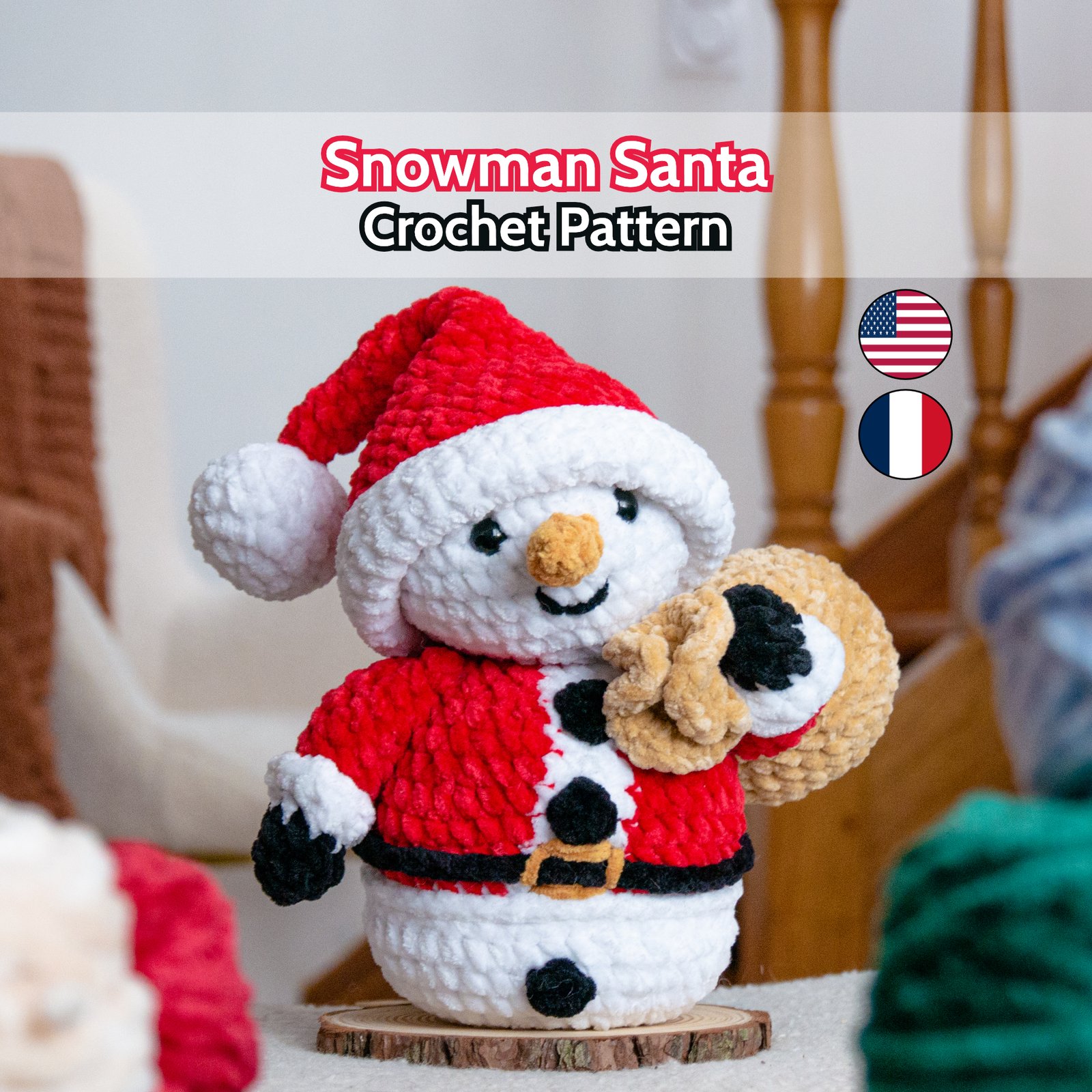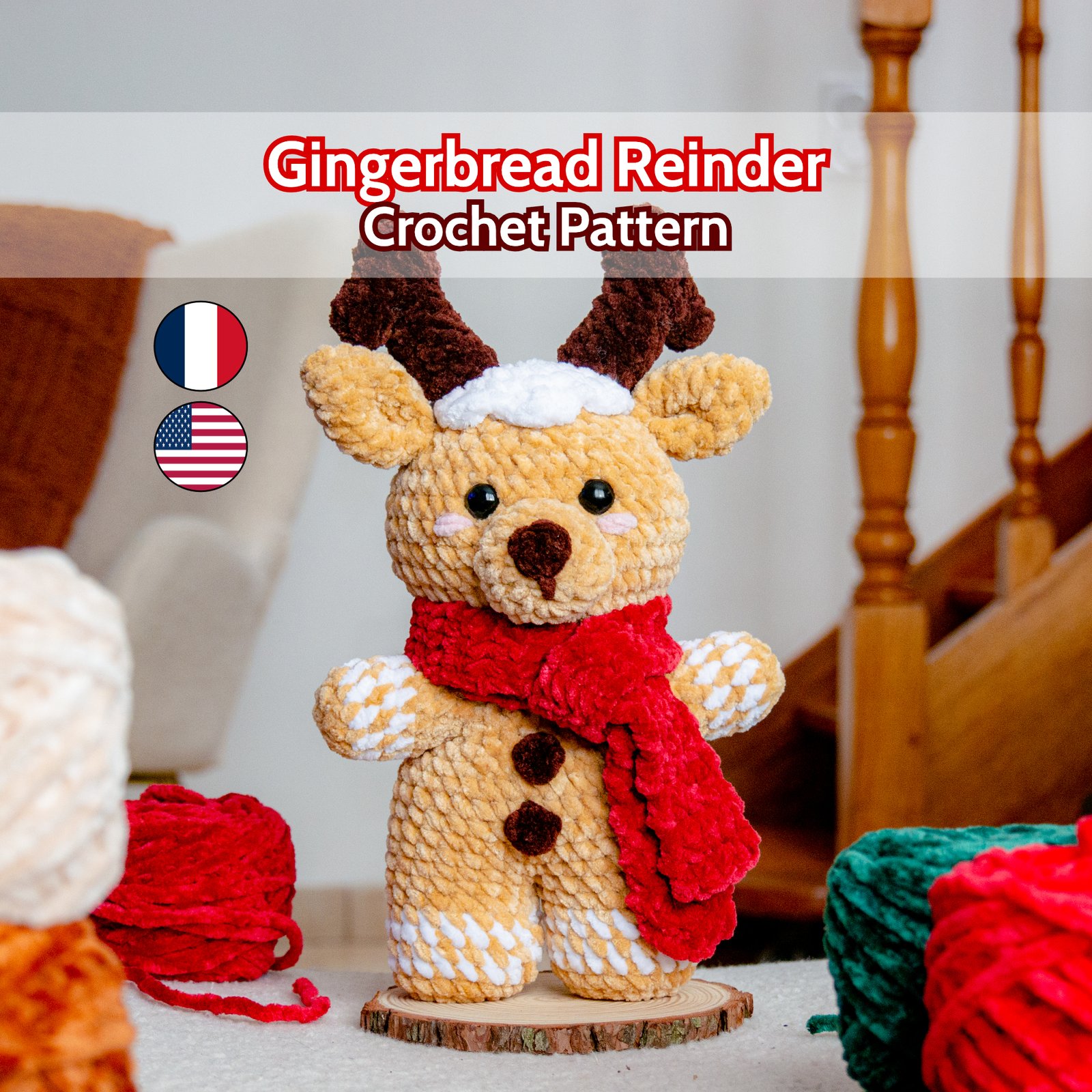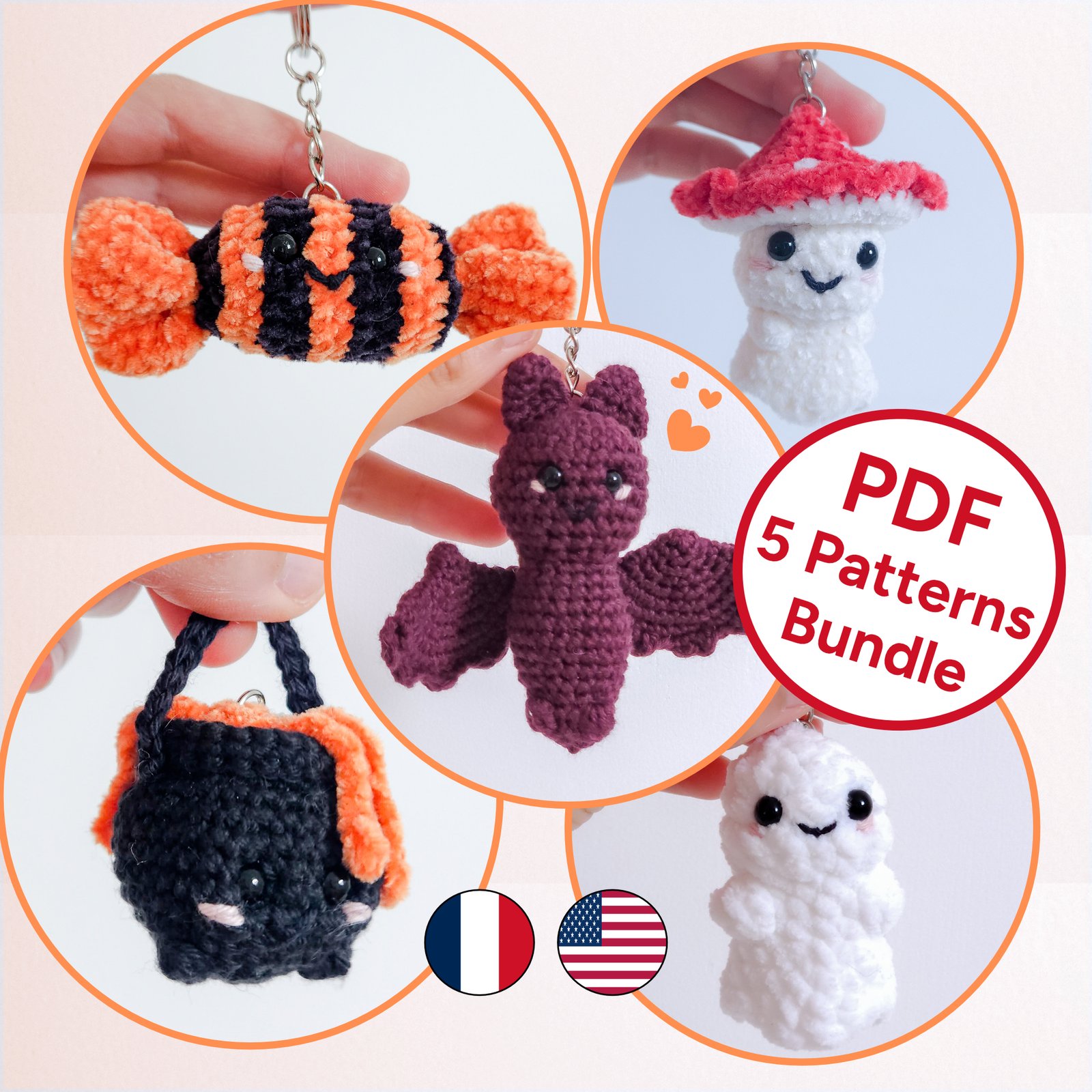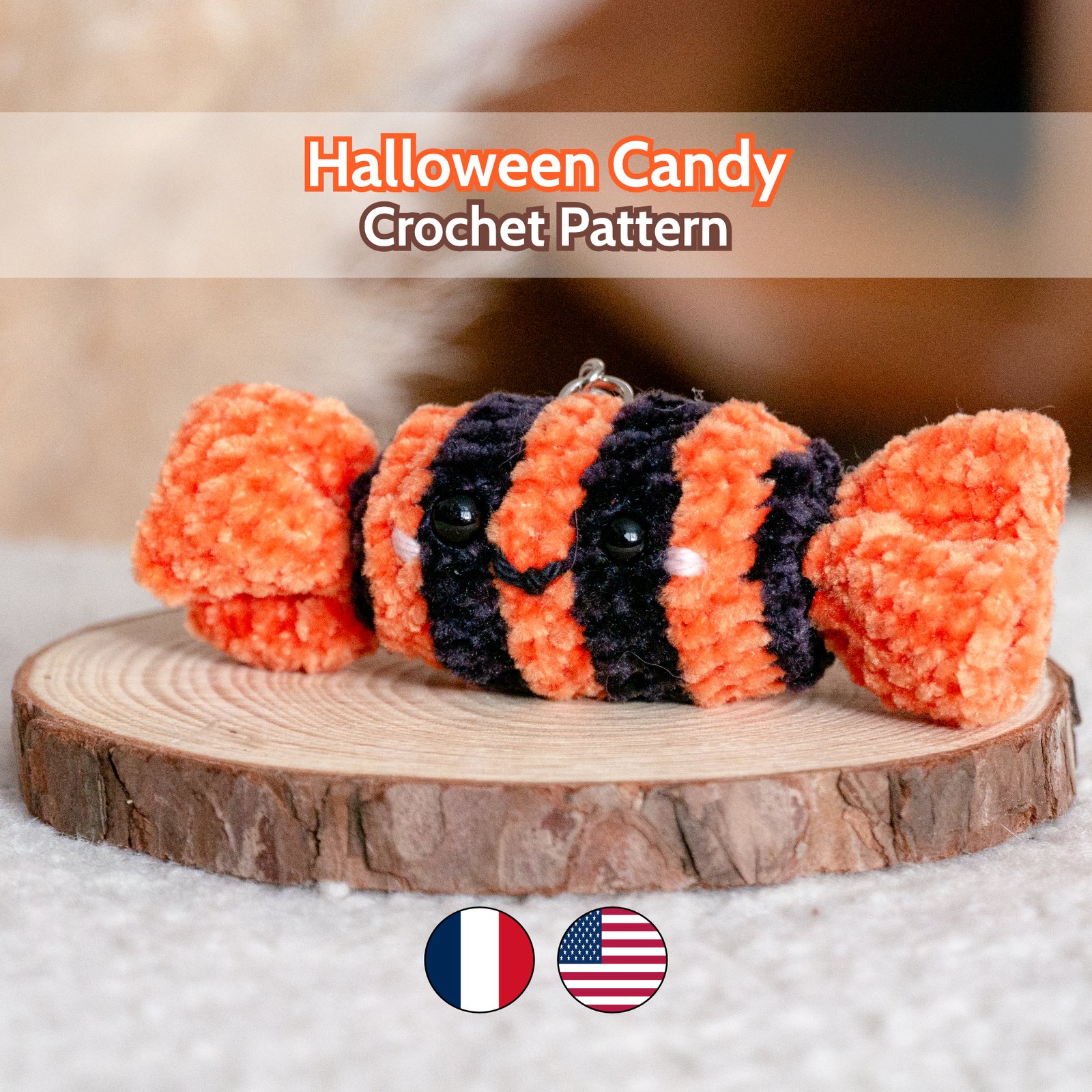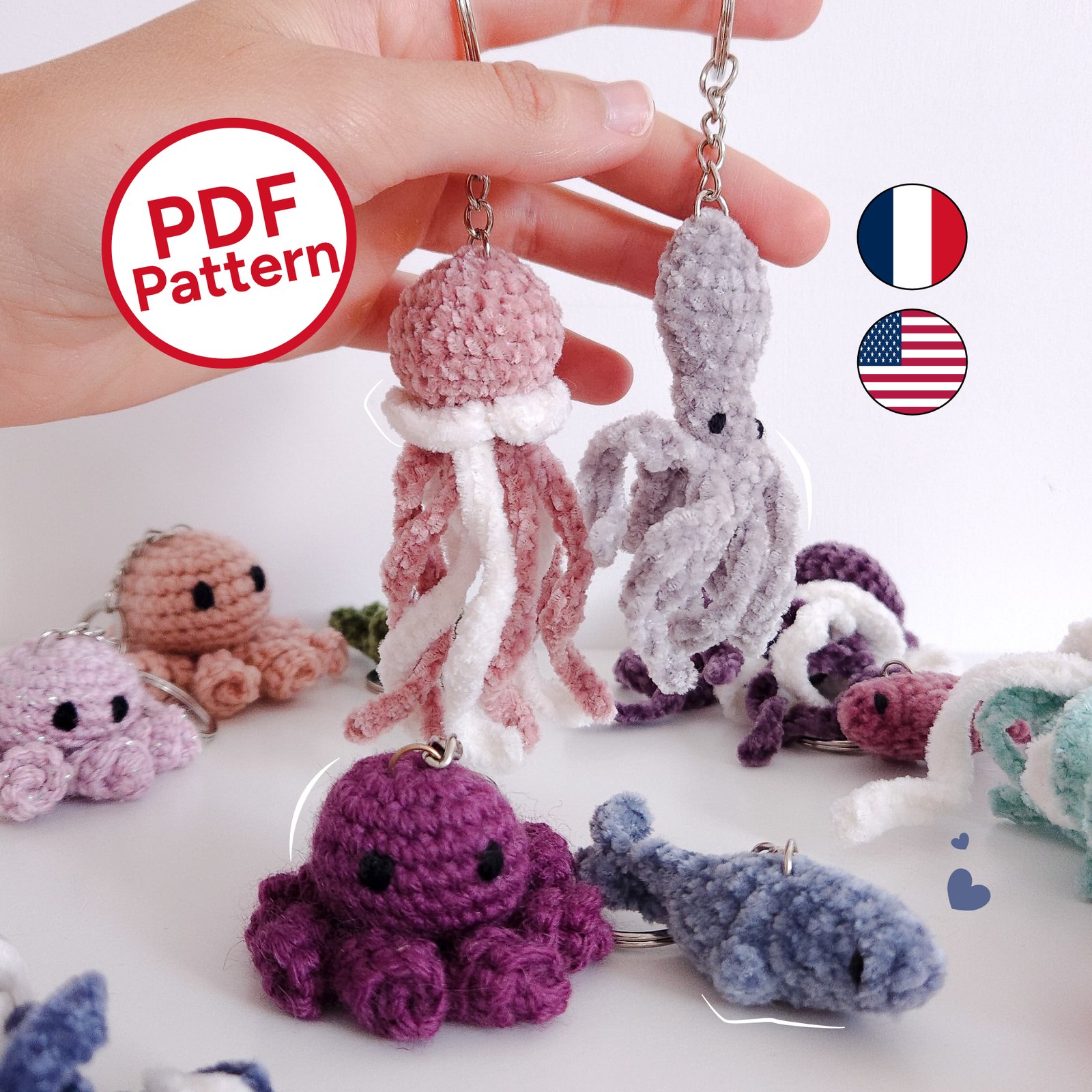Tutorial: how to make a Slip Stitch?
The slip stitch is one of the basic crochet stitches, and a must for beginners. It’s a very short stitch that serves as a connecting and decorative stitch. In practical terms, slip stitch is used to close a crochet row or circle (e.g. to finish a round without leaving an opening) and to create clean finishes at the edges of the work.
The slip stitch is a little different from the other stitches: it doesn’t add any extra height to the work (it remains at the level of the existing row). This means that it’s not used to “build” volume, but rather to assemble or decorate.
Thanks to this characteristic, you’ll find slip stitch used in a number of useful situations: for example, closing a magic crochet circle, joining the beginning and end of a chain to crochet in the round, moving over a few stitches without increasing the height, or adding a neat crochet border at the end of the work.
We’ll go into all this in detail in this step-by-step tutorial. Don’t panic, the slip stitch is one of the easiest stitches to crochet! You’ll soon master it.
Step by Step Tutorial : create a slip stitch
In this step-by-step tutorial, you’ll discover how to easily make a slip stitch. This essential stitch enables you to :
• neatly close a magic circle or a crocheted round row
• Create a decorative border on your work
Follow the steps below with the help of the images provided. Take your time, and don’t hesitate to repeat the steps to master the gesture!
Step 1: Prepare for the start of the row or border
Whether you want to close a magic circle or add a border, start by leaving the last loop you crocheted on your hook. Don’t cut your yarn; you’ll go straight to your slip stitch.

Start of the row
Step 2: Insert your hook into the next stitch
Insert the head of your hook under the two strands (the two sides of the “V”) of the next stitch.
This stitch often corresponds to the very first stitch made at the beginning of the round (to close a circle or a row), or simply to the next one to make a decorative border.
Your hook should now have two loops:
• the initial loop (the one that was on your hook at the start)
• the two strands of the stitch you’ve just inserted.

Insert the hook

in the next stitch
Step 3 : Yarn over
Wrap your yarn around the hook from back to front (this is called “yarn over”).
You now clearly have two distinct loops on your hook: the initial loop, and the loop created by the throw.

Yarn over
Step 4: Pass the throw through both loops
With a gentle movement, pull the yarn you’ve just wound (the throw) through the two loops already present on your hook:
• the stitch where you inserted the hook,
• and the initial loop.
Your yarn then passes through both loops simultaneously, creating a clean, height-free slip stitch.

Passes through the two loops on the hook

And tadaa !
All about Slip stitch
What's the difference between a slip stitch and a single crochet?
Slip stitch is much shorter than Single Crochet. In fact, it doesn’t add any height at all: it’s an almost invisible stitch that just covers the existing stitch. It serves essentially as a transitional or finishing stitch. Single crochet, on the other hand, forms a higher stitch that builds the relief and thickness of the work. Single crochet is used to create the body of a work (it’s part of the basic stitches used to form crocheted fabric), while slip stitch is used occasionally to assemble or decorate. In short, the tight stitch is used to crochet an object, while the slip stitch is used to finish or connect parts of that object.
Which stitch to insert to make a slip stitch?
In general, the hook is inserted into the next stitch, underneath the two strands, in exactly the same way as for a single crochet. In other words, unless otherwise specified in the pattern, slip stitches are made by inserting the hook into the stitch immediately after the one already worked.
For example, to close a row with a round crochet hook, insert the hook into the first stitch of the row (or into the starting chain, depending on the pattern) before making your cast-on and casting off the stitch. If you’re making a slip stitch on the edge, you’ll insert it into each stitch on the edge in turn. There may be variations (sometimes the pattern specifies inserting in the front or back strand only for a particular effect), but for starters, remember that you normally insert under both strands of the target stitch to make a slip stitch.
Why is my slip stitch too tight?
It’s common for beginners to find their slip stitches a little too tight. First of all, you should know that slip stitches are naturally tighter than other stitches – this is normal, since they have no height and sit firmly on the base stitch.
However, if your slip stitches seem too tight to make work difficult, it’s probably a minor yarn tension issue. The key is to keep your loop supple on the hook when making the slip stitch. Avoid pulling too hard on the yarn as you bring it through the loops, or the stitch will tighten excessively. Try crocheting more casually, letting the yarn slide through without forcing it. With a little practice, you’ll find the right tension. Another tip: you can use a hook half a number larger just for your slip stitches, to prevent them from being too tight. Remember, slip stitches should not be crocheted too tightly.
In short, relax: as you improve your tension and gain experience, your slip stitches will become more supple.
Can slip stitch be used as the main stitch?
In theory, yes, you could imagine crocheting an entire work in slip stitch, but in practice it’s not at all common. The slip stitch is not designed to be repeated over several rows as a main stitch, because it doesn’t add any height.
If you tried to chain rows of slip stitches, you’d find it very difficult to insert each stitch (it’s very tight) and your work wouldn’t progress in height. This is why you never use several rows of slip stitches in a row in a classic pattern.
On the other hand, it’s almost always used in combination with other stitches: for example, you’ll use slip stitches to close a round of tight stitches, or to add a decorative final row to rows of bridles, etc. Some more advanced techniques use slip stitches in combination with other stitches. Some more advanced techniques still use slip stitch over many rows for a specific effect (such as an elastic rib stitch obtained by crocheting into the back strand, which can give a knit-like effect). But if you’re just starting out, remember that slip stitch is primarily intended as an auxiliary stitch, not as a basis for building a complete project. In short, use it for what it does best – binding off, finishing, embellishing – and rely on stitches such as purl or bridle to build up the bulk of your projects.
Now you know how to crochet a slip stitch and when to use it. It’s a simple stitch, but very useful for giving a finished look to your crochet creations. Don’t hesitate to practice: the more you use slip stitch, the surer your gesture will become and the more even your tension. Whether you’re closing a magic crochet circle, assembling a row or creating a flawless crochet border, slip stitch will quickly become one of your best allies in your creative projects.
Want to take this stitch a step further and practice it on a real project? Take a look at Yarn & Crochet and discover our selection of patterns using slip stitch – you’ll find plenty of ideas for crochet projects (amigurumis, accessories, decorations…) to put slip stitch to good use while creating beautiful things. Here’s to crocheting fun!
Discover our other crochet tutorials:
Puff Flower Crochet Tutorial
Learn how to crochet a small flower easily with this tutorial. Ideal for beginners, this pattern takes less than 10 minutes to complete!

by Katy
Creator of Yarn & Crochet

